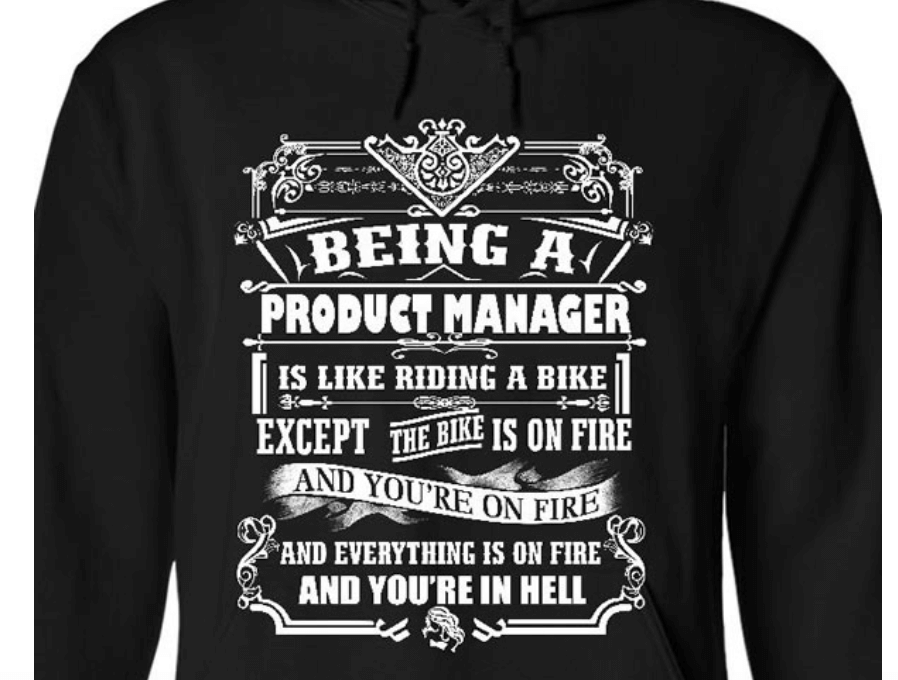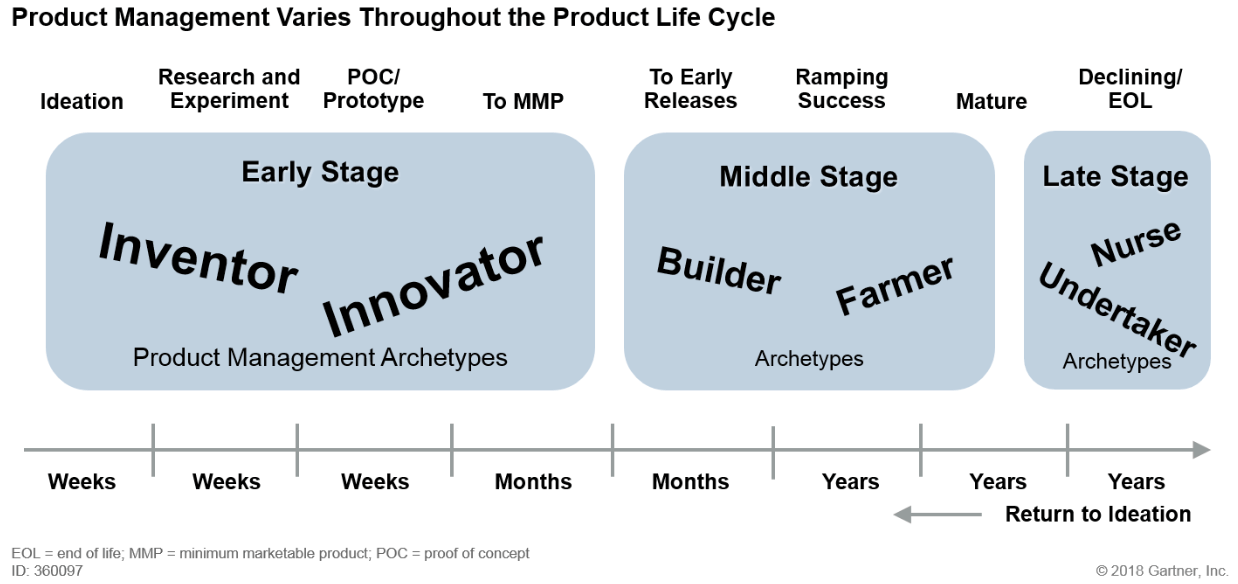I once bought this t-shirt for a fellow product manager:

Why? Because product management is HARD. Some have even called it one of the hardest jobs in software. Still, someone has to do it, and that someone needs to have some seriously solid skills. What makes a great PM (and how to hire one) has been a frequently-discussed topic in the industry for a long time, probably because the job is so challenging.
Many product professionals have written about PM hiring, including Ben Horowitz in his iconic “manifesto” from almost 20 years ago. PMs can find several contemporary articles on the subject (see examples here and here) as well. However, this article is not about that. Instead, I want to discuss whether there is one set of PM characteristics that apply to all environments, products, and stages of the product lifecycle.
What the Research Says
I recently stumbled onto a Gartner report called “Hire and Develop Product Managers Who Fit the 3 Stages of the Product Life Cycle” (paid subscription required). Those of you who thought Gartner (or Forrester for that matter) only writes about Magic Quadrants, Hype Cycles, and Cool Vendors might be surprised at the breadth of their research. Whether you’re hiring a channel sales manager, revamping your website, or building an account-based marketing program, Gartner likely has an analyst standing by.
Anyway, back to the report. The author argues that product management varies widely throughout the product lifecycle, from early stage (brand-new product) to growth and maturity, and finally to the product’s end-of-life (EOL):

Each of these stages requires different aptitudes and experiences. Therefore, you should adjust your PM hiring criteria and desired candidate skill sets based on where your product is on this journey.
Matching the PM to the Product Stage
So, what are the important traits to look for during an interview? Let’s go through each stage and discuss the main ones.
Early-Stage Product
Product managers of an early-stage product need to be comfortable with ambiguity and possess tremendous flexibility, curiosity, and creativity. In addition, they should be highly self-motivated and demonstrate a commitment to continuous learning and self-development. After all, mentorship and training programs are limited at startups. Finally, the required skills should include customer research and rapid prototyping/experimentation. Early-stage startup experience is a big plus here.
An early-stage startup once hired me to lead their product — let’s call it “X.” During my first week on the job, the company started to pivot to a different area, and within two months, “X” was put on hold in favor of “Y.” Flexibility is the name of the game when figuring out product-market fit. The well-known product adage stays true — don’t fall in love with technology, but rather with customer needs.
Middle/Growth-Stage Product
For products in the middle/growth stage, the PM needs to be data-driven. This individual needs to be able to answer a question like “what’s our retention rate per vertical” in her sleep. He or she needs to have strong go-to-market experience (including work with analysts, marketing, and PR), and be comfortable with speaking to large audiences. Look for diverse product collateral, demonstrable growth success stories, and pricing and licensing experience. Also important are examples of business development, including both internal and 3rd party integration.
Product evangelism, both external and internal, is one focus area for a middle-stage PM. During the growth stage, a PM will play a key role in enabling rapid scaling. Even prior to officially becoming a PM, I remember being roped in to present at industry conferences. Later on, I had to create training materials, speak at user groups, revamp price lists, and much more.
Late-Stage Products
For late-stage products, look for PM candidates who demonstrate strong prioritization skills and can offer clear examples of saying “no.” Customer empathy is also essential when planning and executing product sunsetting (aka EOL). Pulling a product that is still making a handful of millions off the market requires guts and a solid business case. Finally, cross-team collaboration and partner management are important areas for this particular stage of the product lifecycle.
When interviewing a PM for a late-stage product, dig into why would they want to work on it. Do they see opportunities to leverage this intellectual property somewhere else (e.g. potential new product)? Are they open to “killing sacred cows” or selling it to a competitor? Even if a product’s revenue is declining 5% year over year, it may still be serving thousands of customers and be an important revenue source. A creative PM might find a lot of value in managing such a product.
The Renaissance PM
Now, are there unicorn PMs out there with skill sets broad enough to comfortably span all stages of a product’s life? Of course there are. For example, a PM could have started in a mid-sized company working on products in the middle stage, then moved to an enterprise and handled a bunch of EOLs. Then he or she could have pivoted to an early-stage startup. A CPO, head of product, or VP of PM at a small- to mid-sized startup would likely have this background. However, as your company’s product portfolio grows and product(s) start to mature, you may need to hire additional PMs with different types of experience to match.
When hiring your next junior or mid-level PM, take a hard, honest look at the product(s) this new PM will own and adjust your criteria accordingly. Everyone in the process will benefit from this upfront clarity.

